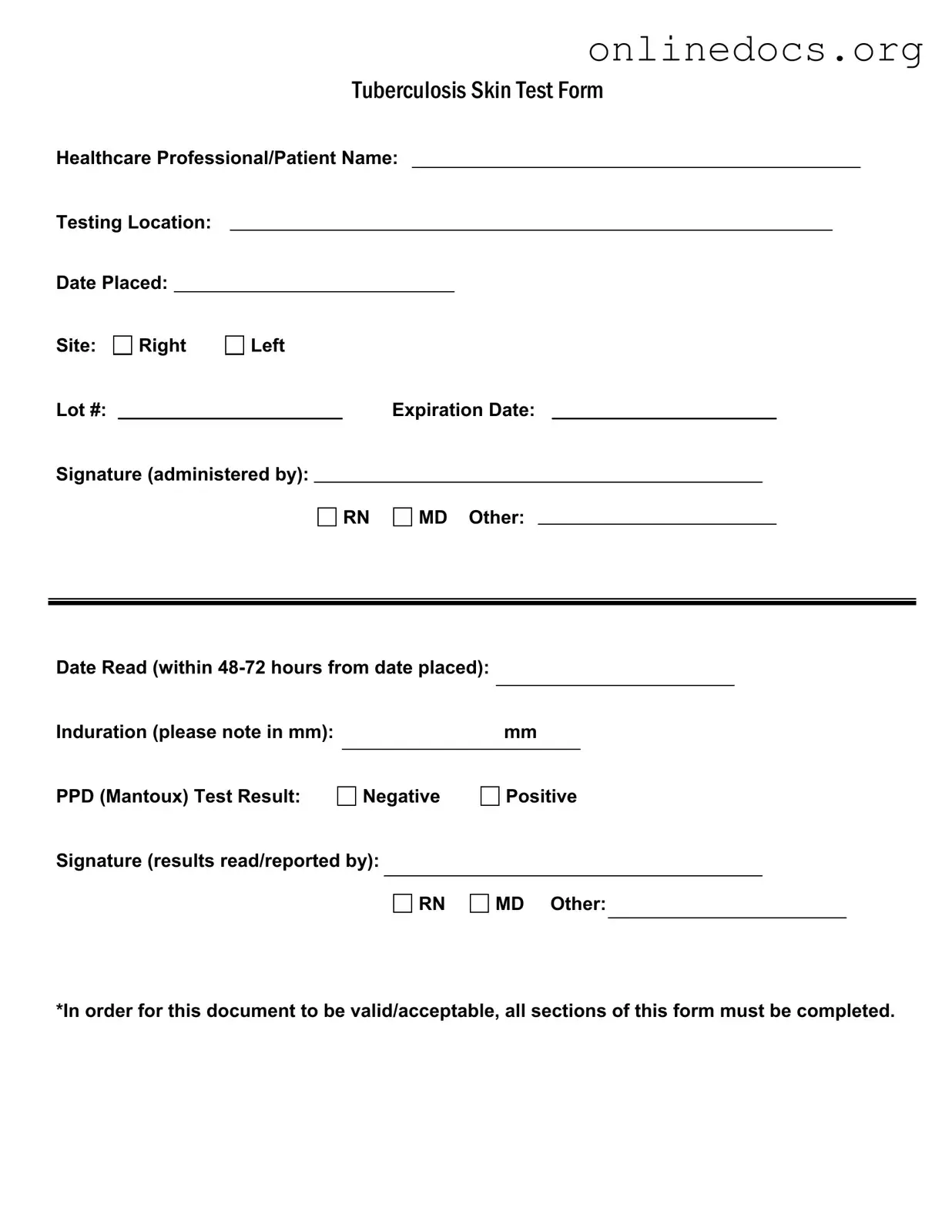The Immunization Record is similar to the TB Test form in that it documents essential health information regarding vaccinations. It includes details such as the patient’s name, date of vaccination, and the type of vaccine administered. Like the TB Test form, it requires signatures from healthcare professionals to validate the record. Both documents serve as proof of medical procedures and are critical for school admissions, employment, and travel requirements.
The Medical History Form also shares similarities with the TB Test form. This document collects comprehensive information about a patient’s past health issues, allergies, and medications. Both forms require the patient’s name and are typically filled out prior to a medical examination. They help healthcare providers assess risks and make informed decisions regarding patient care.
The Consent for Treatment form is another document that resembles the TB Test form. It requires the patient’s name and signature, indicating that they understand and agree to the medical procedures being performed. Both forms aim to ensure that patients are informed and that their rights are respected in the healthcare process.
The Laboratory Test Results form is similar in that it provides critical health information based on diagnostic testing. It typically includes the patient’s name, test type, and results. Both forms must be completed accurately and reviewed by healthcare professionals to ensure proper patient care and follow-up.
The Patient Registration Form is akin to the TB Test form as it collects essential demographic and insurance information about the patient. It includes the patient’s name and contact details, much like the TB Test form. Both documents are foundational for establishing a patient’s identity and ensuring proper record-keeping in a healthcare setting.
The Referral Form is another comparable document. It includes the patient’s name and details about the reason for referral to a specialist. Like the TB Test form, it requires signatures from healthcare providers to confirm the referral’s legitimacy. Both forms facilitate communication between healthcare professionals and ensure continuity of care.
The California Employment Verification form is essential for documenting employment status, much like the various medical forms discussed previously. Just as these forms validate information for healthcare purposes, the employment verification form is instrumental in confirming employment details and salary for various applications. For more resources on employment verification, you can visit legalformspdf.com.
The Discharge Summary is similar to the TB Test form in that it provides important information about a patient’s health status at the time of discharge from a healthcare facility. It includes the patient’s name and details regarding treatment and follow-up care. Both documents are essential for ensuring that patients receive appropriate ongoing care after their initial treatment.
Finally, the Prescription Form shares similarities with the TB Test form. It contains the patient’s name and details about the medication prescribed. Both documents require signatures from healthcare professionals to validate the information. They are crucial for ensuring that patients receive the correct treatments and for maintaining accurate medical records.
